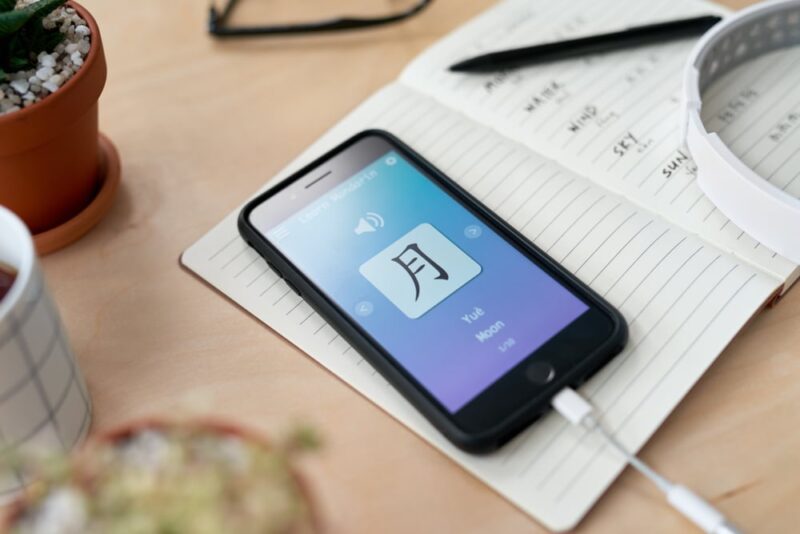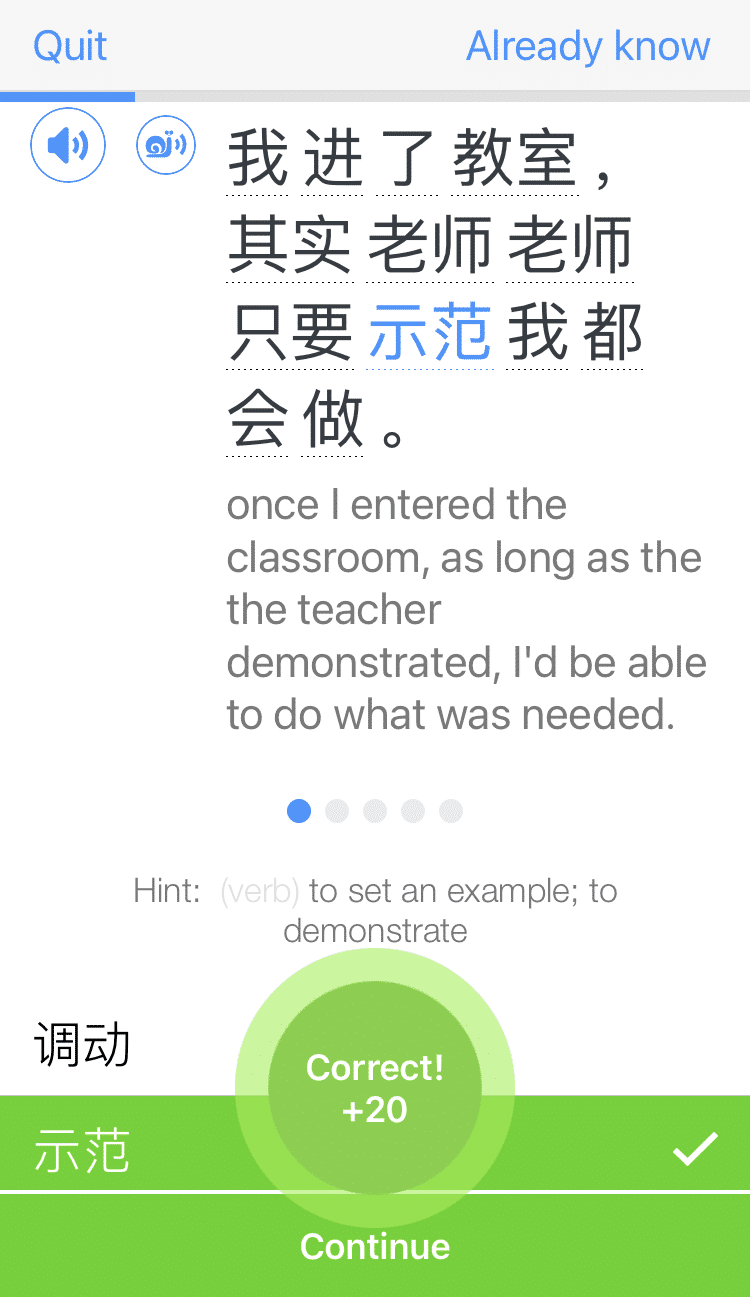Chinese for Beginners: 6 Basics You Need to Learn First

Mandarin is often painted as one of the most difficult languages to learn. But once you’re past a few challenges, you’ll realize that Mandarin isn’t all that challenging and that it’s actually a beautiful and logical language. It also helps that it doesn’t have cases, genders or tenses.
Take a look at the six basics of the Chinese language for beginners.
Contents
Download: This blog post is available as a convenient and portable PDF that you can take anywhere. Click here to get a copy. (Download)
1. Simplified vs. Traditional Chinese Characters
There are a few factors to consider when deciding if you should learn simplified or traditional characters, such as the Chinese dialect you want to learn, who you’ll be communicating in Chinese with and where you’ll be traveling or moving to.
What Is Simplified Chinese?
Simplified Chinese is the standardized form of the Chinese script introduced in 1954. It’s used in Mainland China, Malaysia and Singapore.
With print media on the rise, the government implemented a script with fewer brushstrokes in the characters to increase literacy throughout the country.
Here are a few examples of Simplified characters:
这 (zhè) — this
来 (lái) — to come
爱 (ài) — to love
Mandarin speakers predominantly use Simplified Chinese, except Taiwanese Mandarin speakers who use traditional characters.
What Is Traditional Chinese?
Traditional Chinese is what the writing system looked like before it was standardized for the masses. It’s used in Hong Kong, Macau and Taiwan.
Traditional Chinese had been used for over a thousand years prior to its simplification in the 1950s. This writing system evolved considerably over time, but during the Tang Dynasty (618-907 AD), the script transformed into the Traditional characters we recognize today.
Here’s what the previously mentioned Simplified characters look like next to the Traditional form:
If you want to learn Cantonese instead—the most widely spoken Chinese dialect after Mandarin—you’ll need to learn Traditional Chinese. Cantonese is mainly spoken in Hong Kong, Macau and Guangdong Province in the mainland.
Learn More About Simplified vs. Traditional Chinese
Simplified vs. Traditional Chinese: How They Differ and Which You Should Learn | FluentU Chinese Blog
Simplified vs. traditional Chinese—it’s a common debate among Chinese speakers and a common question among learners. This guide covers the differences between the two,…
Cantonese vs. Mandarin: 5 Key Differences | FluentU Chinese Blog
Cantonese and Mandarin have several important differences, including where they’re spoken and their vocabulary and pronunciation. Find out more about these two dialects…
2. Pinyin
Not to be mistaken for a Chinese alphabet, pinyin is the phonetic system used as a pronunciation guide for Chinese characters. It’s also useful for typing in Chinese.
Pinyin was introduced around the time the government simplified the writing system to improve literacy rates, and it’s one of the first things you’ll learn when you start learning Chinese.
Pinyin is composed of initials and finals.
Initials are consonants that start off every single pinyin syllable, while finals are possible vowel combinations that follow the initials. Finals can be a singular vowel, a combo of vowels or a combo of vowels and consonants.
The pinyin consonants are b, p, m, f, d, t, n, l, g, k, h, j, q, x, zh, ch, sh, r, z, c, s, y and w.
The pinyin vowels are a, e, i, o, u and ü.
Pinyin isn’t actually pronounced like the Latin alphabet that we recognize, but the good news is that all the pinyin sounds already exist in English. So it’s not a matter of unfamiliar sounds—it’s more about retraining your brain to read b as “bwo” instead of “bee.”
Here are the first four pinyin letters with an American pronunciation guide:
b (“bwo”)
p (“pwo”)
m (“mwo”)
f (“fwo”)
Learn More About Pinyin
What Is Pinyin? The Complete Beginner’s Guide | FluentU Chinese Blog
Pinyin is a Chinese writing system that uses the Latin alphabet. It lets you become fluent in Chinese before you learn any Chinese characters! So dive on in to this…
5 Pinyin Practice Games to Improve Chinese Pronunciation | FluentU Chinese Blog
A pinyin practice game can help you master the romanization of Chinese words and have fun with your Mandarin learning at the same time. If pinyin is throwing you for a…
3. Chinese Tones
Chinese uses tones to indicate the meaning of words.
There are only so many combinations you can make with pinyin vowels and consonants, and a lot of characters share the same pinyin spelling. Tone marks help you distinguish between those words with the same pinyin.
There are five tones:
- The first or flat tone (–), as in 妈 (mā) — “mother”
- The second or rising tone (/), as in 麻 (má) — “numb” or “hemp”
- The third or dipping tone (∨), as in 马 (mǎ) — “horse”
- The fourth or falling tone (), as in 骂 (mà) — “to scold”
- The fifth or neutral tone (no tone mark), as in 吗 (ma) — a question particle
Most pinyin syllables will take one of the first four tone marks. The fifth one is only reserved for a small set of characters.
For pinyin syllables with one vowel, a tone mark should be placed on top of that vowel. For the pinyin shu, the tone mark would be placed above u, like in shū.
For vowel combinations, the tone mark would be placed according to this order of priority: a, o, e, i, u, ü.
So for the pinyin jiao, the tone mark would go above the a. For the pinyin jie, the tone mark would go above e.
Here’s what jiao and jie look like with the four main tones:
jiāo, jiē
jiáo, jié
jiǎo, jiě
jiào, jiè
Pinyin might seem challenging at first, but it’s completely realistic to learn it in just one or two days.
Learn More About Chinese Tones
How to Master Chinese Tones: A Comprehensive Guide | FluentU Chinese Blog
Chinese tones determine the meaning of words and there are five total. Click here to learn all five tones in Chinese (flat, rising, dip, falling, neutral) along with tone…
How to Practice Chinese Tones: 11 Tips to Master Pronunciation | FluentU Chinese Blog
Don’t know how to practice Chinese tones? Look no further. Click here to find 11 highly effective methods for practicing Chinese tones, like learning practicing tone…
4. Chinese Stroke Order
At first appearance, Chinese characters—also known as hanzi—look extremely difficult to tackle. Thankfully, there’s a logical order to writing them.
Once you nail that order, you’ll know exactly how to approach every character out there.
Characters were originally created with a paintbrush, so the strokes are technically brushstrokes that you would see in Chinese calligraphy.
Generally, there are eight types of strokes. Many of these can be used together to create compound strokes:
- 丶, known as 点 (diǎn), meaning “dot”
- 一, known as 橫 (héng), meaning “horizontal stroke”
- 丨, known as 竖 (shù), meaning “vertical stroke”
- 丿, known as 撇 (piě), meaning “slant,” drawn right to left
- ⁄ , known as 提 (tí), meaning “raise,” drawn from left to right (the reverse of 撇)
- ㇏, known as 捺 (nà), meaning “forcefully pressing,” drawn from left to right
- ㇄, known as 弯 (wān), meaning “curve,” drawn from left to right
- 亅, known as 钩 (gōu), meaning “hook” (a little tick that’s normally part of a compound stroke)
Here are the basic rules of stroke order:
- Left to right, top to bottom
- Horizontal, then vertical
- Diagonal to the left, then diagonal to the right
- Draw the center structure first for vertically symmetrical characters
- Draw outside to inside before closing the frame for boxed characters
Learn More About the Chinese Stroke Order
https://www.fluentu.com/blog/chinese/mandarin-chinese-character-stroke-order/
5. Chinese Radicals
A Chinese character can be broken down into several parts or sections.
Some of these parts are known as radicals, which are building blocks of hanzi that can help you figure out a character’s pronunciation or meaning.
Radicals are also used to look up characters in a Chinese dictionary.
Let’s examine the character 妈 (mā), which means “mother.” 妈 can be broken into two parts:
女 (nǚ) — female
马 (mǎ) — horse
As you can see, the radical 女 acts as a semantic component since “female” and “mother” are related. 马 acts as a phonetic component since 妈 and 马 have the same pinyin spelling, just different tones.
Each character only has one radical, located at the left or top of the character, while the rest is comprised of components.
All in all, there are 214 radicals. But don’t panic—you don’t have to memorize them all! Most of these radicals double as simple characters you’ll learn as a beginner.
Learn More About Chinese Radicals
The Chinese Learner’s Guide to All 214 Radicals | FluentU Chinese Blog
Understanding Chinese radicals will help you read and write more effectively in Mandarin by helping you understand characters better. Here’s everything you need to learn…
Your Shortcut for Learning to Read in Chinese: 15 Common Phonetics and Radicals
Are you starting to learn to read in Chinese? To make it easier and to help you learn quicker, here are 15 common phonetics and radicals you’ll want to know!
6. Daily Chinese Phrases
Prioritize learning words in context to see their correct usage rather than individual words from lists. This also makes learning grammar easier since you’ll better understand word order.
Plus, what’s taught in Chinese textbooks is often far too formal for regular everyday conversations.
For example, let’s talk about how you’d say “sorry” in Chinese.
An online translator and a straightforward wordlist might show the translation as 对不起 (duì bù qǐ). While technically correct, this is quite a formal way of apologizing that’s often reserved for more serious offenses.
For something minor—more of a “my bad” situation than an “I sincerely apologize” kind of circumstance—the better phrase to use is 不好意思 (bù hǎo yì si).
Learn More About Daily Chinese Phrases
115+ Basic Chinese Phrases You Can Use Daily | FluentU Chinese Blog
Learn over 115 Chinese phrases that’ll help you in any situation! See common phrases to use whether you’re saying hello or goodbye, going shopping, making small talk and…
60+ Chinese Restaurant Phrases That Are Essential for Eating Out in China | FluentU Chinese Blog
Our list of over 60 key Chinese restaurant phrases will help you eat your way through China, from street food to fine dining. Order, eat and pay like a native Chinese…
Chinese for Travel: 30 Useful Mandarin Phrases for Your Journey | FluentU Chinese Blog
Need to know Chinese for travel? These 30 Chinese travel phrases are perfect for your next trip! From being at the airport to taking a taxi or getting checked in to your…
There might be a lot to go through here, but I promise you’re in good hands!
I hope this post gave you the jumpstart you needed to get ahead in Mandarin! If you’re ready to start studying, we’ve got tons of other guides you can read and videos you can watch on FluentU. FluentU takes authentic videos—like music videos, movie trailers, news and inspiring talks—and turns them into personalized language learning lessons. You can try FluentU for free for 2 weeks. Check out the website or download the iOS app or Android app. P.S. Click here to take advantage of our current sale! (Expires at the end of this month.)
You’ve got everything you need to set you on the right path. Just remember to have fun and enjoy the learning process!
If you want to continue learning Chinese with interactive and authentic Chinese content, then you'll love FluentU.
FluentU naturally eases you into learning Chinese language. Native Chinese content comes within reach, and you'll learn Chinese as it's spoken in real life.
FluentU has a wide range of contemporary videos—like dramas, TV shows, commercials and music videos.
FluentU brings these native Chinese videos within reach via interactive captions. You can tap on any word to instantly look it up. All words have carefully written definitions and examples that will help you understand how a word is used. Tap to add words you'd like to review to a vocab list.
FluentU's Learn Mode turns every video into a language learning lesson. You can always swipe left or right to see more examples for the word you're learning.
The best part is that FluentU always keeps track of your vocabulary. It customizes quizzes to focus on areas that need attention and reminds you when it’s time to review what you’ve learned. You have a 100% personalized experience.
Start using the FluentU website on your computer or tablet or, better yet, download the FluentU app from the iTunes or Google Play store. Click here to take advantage of our current sale! (Expires at the end of this month.)And One More Thing...











